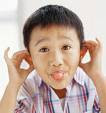Parent management training (PMT) is an adjunct to treatment that involves educating and coaching moms and dads to change their Aspergers child’s problem behaviors using principles of learning theory and behavior modification.
Purpose—
The aim of PARENT MANAGEMENT TRAINING is to decrease or eliminate an Aspergers child’s disruptive or inappropriate behaviors at home or school and to replace problematic ways of acting with positive interactions with peers, moms and dads and such authority figures as teachers. In order to accomplish this goal, PARENT MANAGEMENT TRAINING focuses on enhancing parenting skills. The PARENT MANAGEMENT TRAINING therapist coaches parents in applying such strategies as rewarding positive behavior, and responding to negative behavior by removing rewards or enforcing undesirable consequences (punishments).
Although PARENT MANAGEMENT TRAINING focuses on specific targeted behaviors rather than on the youngster's diagnosis as such, it has come to be associated with the treatment of certain disorders. PARENT MANAGEMENT TRAINING is used in treating oppositional defiant disorder , conduct disorder , intermittent explosive disorder (age-inappropriate tantrums), and attention deficit disorder with hyperactivity (attention-deficit/hyperactivity disorder ). Such antisocial behaviors as fire-setting and truancy can also be addressed through PARENT MANAGEMENT TRAINING.
Description—
In PARENT MANAGEMENT TRAINING, the therapist conducts initial teaching sessions with the parent(s), giving a short summary of foundational concepts in behavior modification; demonstrating interventions for the moms and dads; and coaching parents in carrying out the techniques of PARENT MANAGEMENT TRAINING. Early meetings with the therapist focus on training in the principles of behavior modification, response-contingent learning, and ways to apply the techniques. Moms and dads are instructed to define the behavior(s) to be changed concretely and specifically. In addition, they learn how to observe and identify relevant behavior and situational factors, and how to chart or otherwise record the youngster's behavior.
Defining, observing and recording behavior are essential to the success of this method, because when such behaviors as fighting or tantrums are highlighted in concrete, specific ways, techniques of reinforcement and punishment can be put to use. Progress or its absence is easier to identify when the description of the behavior is defined with enough clarity to be measurable, and when responses to the PARENT MANAGEMENT TRAINING interventions are tracked on a chart. After the Aspergers child’s parents grasp the basic interventions as well as when and how to apply them, the techniques that the moms and dads practiced with the therapist can be carried out at home.
Learning theory, which is the conceptual foundation of PARENT MANAGEMENT TRAINING, deals with the ways in which organisms learn to respond to their environment and the factors that affect the frequency of a specific behavior. The core of learning theory is the notion that actions increase or decrease in frequency in response to the consequences that occur immediately after the action. Research in parent-child interactions in families with disruptive, difficult or defiant kids shows that parental responses are unintentionally reinforcing the unwanted behavior. PARENT MANAGEMENT TRAINING trains moms and dads to become more careful in their reactions to a youngster's behavior.
The parents learn to be more discerning: to provide attention, praise and increased affection in reaction to the Aspergers child’s behaving in desired ways; and to withdraw attention, to suspend displays of affection, or to withdraw privileges in instances of less desirable behavior.
The most critical element of PARENT MANAGEMENT TRAINING is offering positive reinforcement for socially appropriate (or at least non-deviant) behaviors. An additional component involves responding to any undesired behaviors by removing rewards or applying punishment. These two types of response to the youngster must be carried out with great consistency. Consistent responding is important because erratic responses to unwanted behavior can actually cause the behavior to increase in frequency. For instance, if a youngster consistently throws tantrums in stores, hoping to be given something to end the tantrum, inconsistent parent responses can worsen the situation. If a parent is occasionally determined not to give in, but provides a candy bar or a toy to end the tantrum on other occasions, the youngster learns either to have more tantrums, or to have more dramatic tantrums. The rise in the number or intensity of tantrums occurs because the youngster is trying to increase the number of opportunities to obtain that infrequent parental reward for the behavior.
Planning responses ahead of time to predefined target behaviors by rewarding desired actions and by withdrawing rewards or applying punishment for undesirable behavior is a fundamental principle of PARENT MANAGEMENT TRAINING. Consistent consequences, which are contingent on (in response to) the youngster's behavior, result in behavior change. Moms and dads practice therapeutic ways of responding to their Aspergers child’s behavior in the PARENT MANAGEMENT TRAINING sessions with the therapist.
Through PARENT MANAGEMENT TRAINING, parents learn that positive rewards for appropriate behaviors can be offered in a variety of ways. Giving praise, providing extra attention, earning points toward obtaining a reward desired by the youngster, earning stickers or other small indicators of positive behavior, earning additional privileges, hugging (and other affectionate gestures) are all forms of reward. The technical term for the rewarding of desired behavior is positive reinforcement. Positive reinforcement refers to consequences that cause the desired target behavior to increase.
PARENT MANAGEMENT TRAINING instructs moms and dads to cancel rewards or give punishments when the Aspergers child behaves in undesirable ways. The removal of rewards usually entails time away from the circumstances and situations in which the youngster can do desired activities or receive attention. The concept of a "time out" is based on this notion of removal of rewards. Time out from rewards customarily means that the youngster is removed from people and stimulation for a certain period of time; it can also include deprivation of privileges.
Punishment in PARENT MANAGEMENT TRAINING is not necessarily what parents typically refer to as punishment; it most emphatically is not the use of physical punishment. A punishment in PARENT MANAGEMENT TRAINING involves a response to the youngster's negative behavior by exposing the Aspergers child to something he or she regards as unpleasant. Examples of punishments might include having to redo the correct behavior so many times that it becomes annoying; verbal reproaches; or the military standby—"drop and give me fifty"—having to do pushups or sit-ups or laps around a playing field to the point of discomfort.
The least challenging problems, which have the greatest likelihood of successful change, are tackled first, in hope of giving the family a "success experience." The success experience is a positive reinforcement for the family, increasing the likelihood that they will continue using PARENT MANAGEMENT TRAINING in efforts to bring about change. In addition, lower-level behavioral problems provide opportunities for moms and dads to become skilled in intervening and to learn consistency in their responses. After the parents have practiced using the skills learned in PARENT MANAGEMENT TRAINING on the less important problems, more severe issues can be tackled.
In addition to face-to-face sessions with the parents, some PARENT MANAGEMENT TRAINING therapists make frequent telephone calls to the moms and dads between sessions. The purposes of the calls are to remind moms and dads to continue to be consistent in applying the techniques; to answer questions about the work at home; and to praise the parents' attempts to correct the youngster's behavior. In addition, ongoing support in sessions and on the telephone helps parents feel less isolated and thus more likely to continue trying to use learning principles in managing their youngster. Troubleshooting any problems that arise regarding the application of the behavioral techniques is handled over the telephone and in the office sessions.
An additional aspect of learning theory is that rewarding subunits of the ultimately desired behavior can lead to developing more complex new actions. The subunits are finally linked together by changing the ways in which the rewards are given. This process is called "chaining." Sometimes, if the youngster shows no elements of the desired response, then the desired behavior is demonstrated for the Aspergers child and subsequent "near hits" or approximations are rewarded. To refine "close but not quite" into the targeted response, rewards are given in a slightly "pickier" manner. Rewarding successive approximations of the desired behavior is also called "shaping."
Risks—
The best way to learn to alter parental responses to Aspergers child behaviors is with the support and assistance of a behavioral health professional (psychologist, psychiatrist, clinical social worker). As noted earlier, moms and dads often inadvertently reinforce the problem behaviors, and it is difficult for a parent to see objectively the ways in which he or she is unintentionally supporting the defiant or difficult behavior. Furthermore, inappropriate application of such behavioral techniques as those used in PARENT MANAGEMENT TRAINING can actually make the problem situation worse. Families should seek therapists with valid credentials, skills, training and experience in PARENT MANAGEMENT TRAINING.
Normal results—
Typically, the parents should notice a decrease in the unwanted behaviors after they implement the techniques learned in PARENT MANAGEMENT TRAINING at home. Of the various therapies used to treat childhood disorders, PARENT MANAGEMENT TRAINING is among those most frequently researched. PARENT MANAGEMENT TRAINING has shown effectiveness in changing Aspergers kid's behavior in very well-designed and rigorous studies. PARENT MANAGEMENT TRAINING has a greater effect on behavior than many other treatments, including family therapy or play therapy.
Furthermore, the results— improved child behavior and reduction or elimination of undesirable behavior— are sustained over the long term. When a group of kids whose families had used PARENT MANAGEMENT TRAINING were examined one to fourteen years later, they had maintained higher rates of positive behavior and lower levels of problem behavior.





.jpg)


